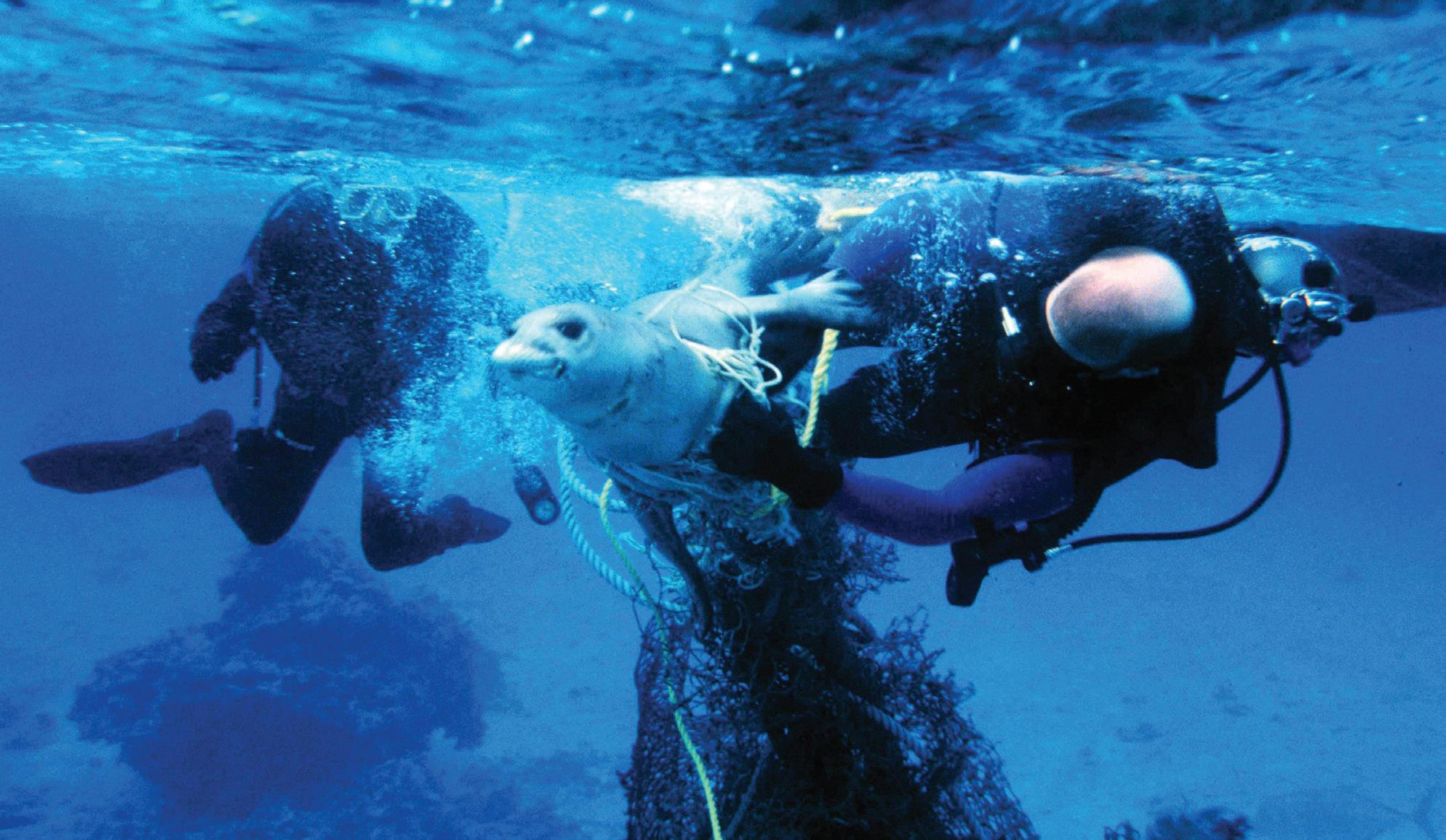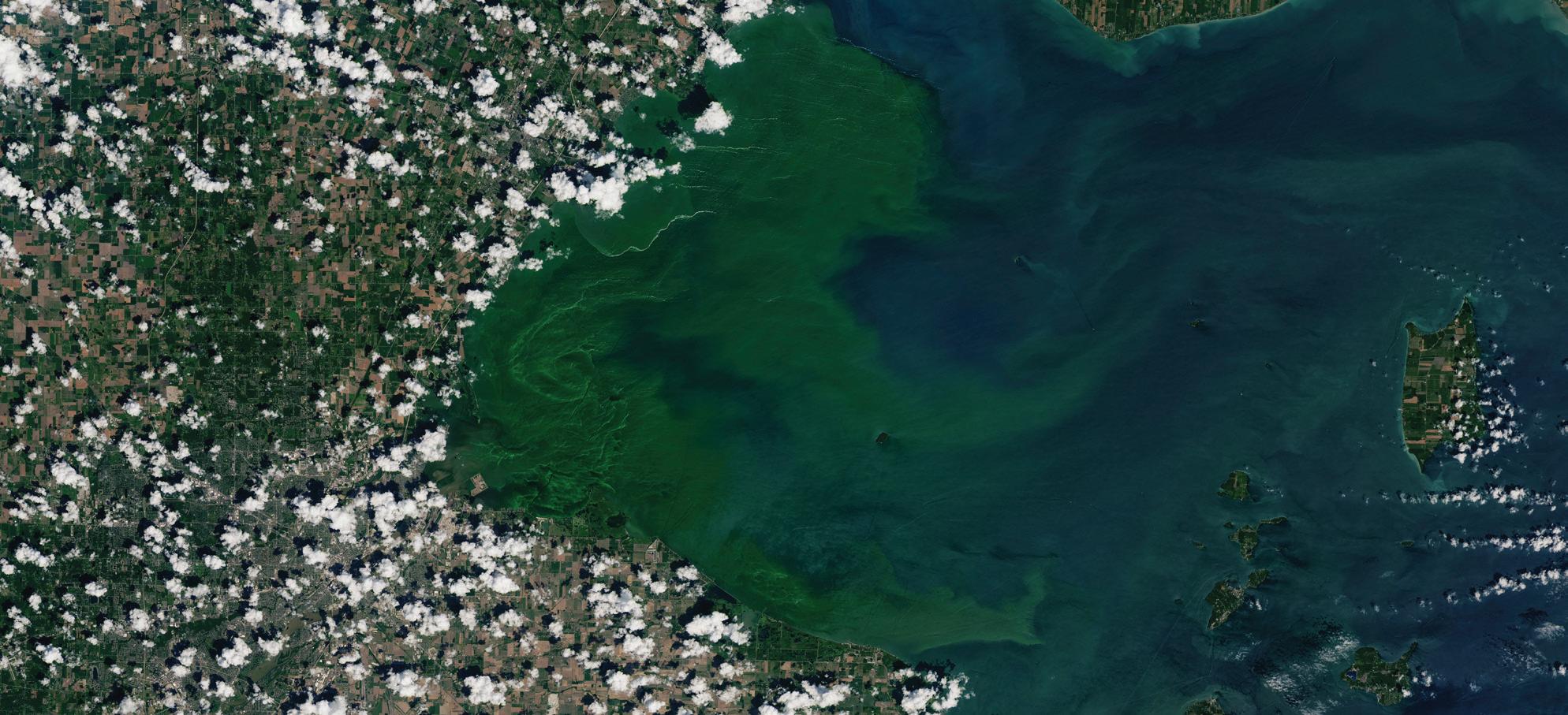NOAA TODAY
Cleaner, Safer Beaches and Coasts
Lt. Cmdr. Marc Pickett and Lt. Mark Sarmek wrestle to free an entangled Hawaiian monk seal at French Frigate Shoals, Northwestern Hawaiian Islands, during a marine debris survey and removal cruise. The seal survived.
I
n January of 2017, the Ellen MacArthur Foundation, in partnership with the World Economic Forum, released a report with a jarring prediction: By 2050, plastic in the oceans will outweigh fish. Every year, 8 mil-
1961
lion tons of plastic enter the ocean, a rate equivalent to dumping the contents of one garbage truck every minute. Garbage patches of varying sizes are now circulating in each of the five rotating ocean currents, or gyres.
NOAA scientists and others are still studying how these garbage patches may impact human and animal health. In the meantime, because about 80 percent of pollution to the marine environment comes from land, NOAA’s Marine Debris
World-Wide Standardized Seismograph Network is established by the Coast and Geodetic Survey to monitor earthquakes and nuclear testing. The network played a central role in supplying data about continental drift and plate tectonics.
76
NOAA PHOTO
NOAA’s Marine Debris Program By Craig Collins









































